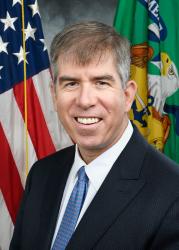This article originally appeared in Real Clear Markets on August 30, 2017.
The U.S. economy and labor market experienced their most severe shock in generations from 2008-10, with over eight million jobs disappearing in a span of just over two years. Once the economic expansion took hold and employment began growing, the eight million jobs had been recovered by May of 2014. Yet, because of population growth, more jobs were needed for a true recovery. The unemployment rate was still elevated at 6.3 percent, an indicator of the not yet complete recuperation and the “jobs gap” that still remained.
A recent Hamilton Project analysis calculated that—adjusting for population and demographic changes—the jobs gap, as of July 2017, is now closed. This does not mean the economy is at full employment or has no slack, but rather that enough jobs have been added to restore the share of the population working (after adjusting for demographic shifts) to where it was before the crisis began. Any slack that existed prior to the financial crisis still remains, and it’s worth noting that the prime age employment rate is still below its December 2007 level of 79.8 percent. The jobs gap is closed despite this because older workers are employed at a higher rate than previously. But, there is clearly room to lift employment rates—at a minimum back to where they were prior to the crisis.
If the jobs gap is closed, but many are still not working, what needs to happen in order to lift employment? Another recent Hamilton Project analysis entitled “Who Is Out of the Labor Force” is helpful here. It studies the 18 percent of the prime age population that are not currently in the labor force, meaning they aren’t working nor are they looking for work. Far from being a monolithic block, those not in the labor force give many reasons for their nonparticipation. Importantly, the U.S. safety net may play a smaller role than many believe. Only 11 percent of the prime age nonparticipants are in households with government support but no earnings or retirement income (though there is likely some underreporting of government income support), and 85 percent of that group are either caregivers or disabled. 57 percent of nonparticipants live in a household with some safety net income (not including age-related social security payments), though these households generally also have labor market earnings.
If the jobs gap is closed, but many are still not working, what needs to happen in order to lift employment?
Appropriate fiscal and monetary policies are an important part of lifting the employment rate. The economy needs to add roughly 75 thousand jobs a month to keep the unemployment rate stable and the demographically adjusted labor force participation rate at current levels. Job growth will need to continue to be faster than that to push up employment rates.
Beyond macroeconomic policies, what policy options are available to help lift employment? The diverse situations and needs of those outside the labor force emphasize the need for a multifaceted policy response to remove barriers to work. Helping the millions of Americans who are either unemployed or out of the labor force get back into the labor market is one of the great challenges we currently face. Here are a few policy options that could have a demonstrable impact:
- Making sure childcare policies are adequate, schedule flexibility available, and pathways to re-enter the workforce after taking time out as a caregiver would make it substantially easier to boost the employment rate. The largest block of the prime age nonparticipants (~40 percent) are caregivers taking care of children or other family members. This group—nearly all women—may include many people who prefer to be out of the labor force, but some may prefer employment or struggle to re-enter employment after a stint as a caregiver, and policy shifts could make that road to employment easier.
- Protecting and further strengthening our nation’s healthcare system—including access to mental health care and drug treatment—would likely help many rejoin the workforce. Almost 30 percent of nonparticipants report being ill or disabled. As with caregivers, many of those who are disabled may not be ready to quickly re-enter the labor force, and providing services to encourage re-entry and treatment to those with treatable conditions (ranging from addiction to mental health challenges to physical constraints) will be necessary to move part of this large bloc of out of the labor force adults back into employment. The share of prime age men who list illness or disability as their reason for being out of the labor force has been relatively constant over the last decade, but it remains high at near 50 percent. Recent research by Alan Krueger (2016) finds that roughly half of prime age nonparticipating men take daily pain medication, evidence of an important barrier to re-employment.
While these two large groups of prime age nonparticipants may need specified policies, and the 8 percent that are students and 5 percent that are retired may be unlikely to rejoin quickly, the remaining 15- 20 percent of nonparticipants might be more easily transitioned to employment and kept in the labor force with a variety of policies that remove barriers to working. These include:
- Making investments in training programs, public employment, re-entry programs for felons, reforming licensing rules, among other policies may be needed to stem a long term decline in participation. It seems clear from the nearly five decade decline in the participation rate of prime age men—especially among less educated workers—that the United States labor market, despite all its flexibility, is not meeting the challenge of matching individuals and opportunity, and we may need more active labor market policies to increase employment rates.
With aging expected to reduce overall labor force participation by 0.2 to 0.3 percentage points a year, increasing employment opportunities and removing barriers that keep people out of the labor force is important to the economy and families’ living standards. Yet, increasing employment is more than a purely material goal. Research has demonstrated that many people draw meaning from their work and establish their identity through their job, making increasing employment rates an even more important step to increasing welfare.
The Brookings Institution is committed to quality, independence, and impact.
We are supported by a diverse array of funders. In line with our values and policies, each Brookings publication represents the sole views of its author(s).





Commentary
Op-edWe’ve fixed the jobs gap, but people still aren’t working
August 30, 2017